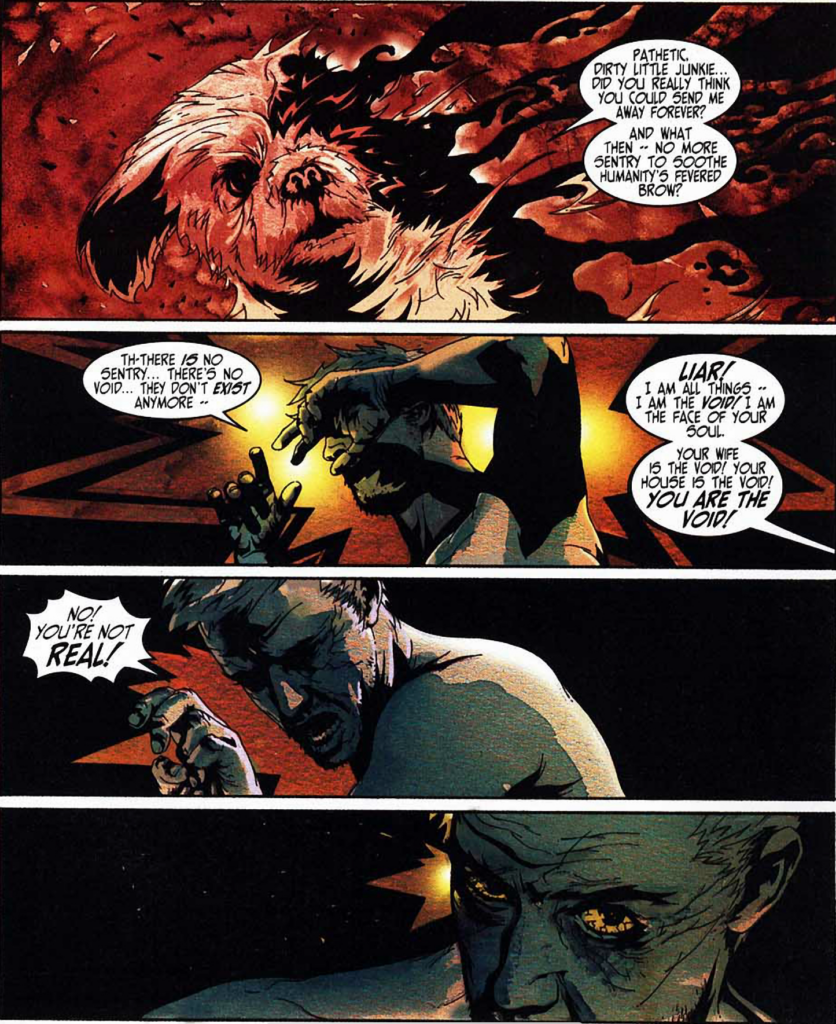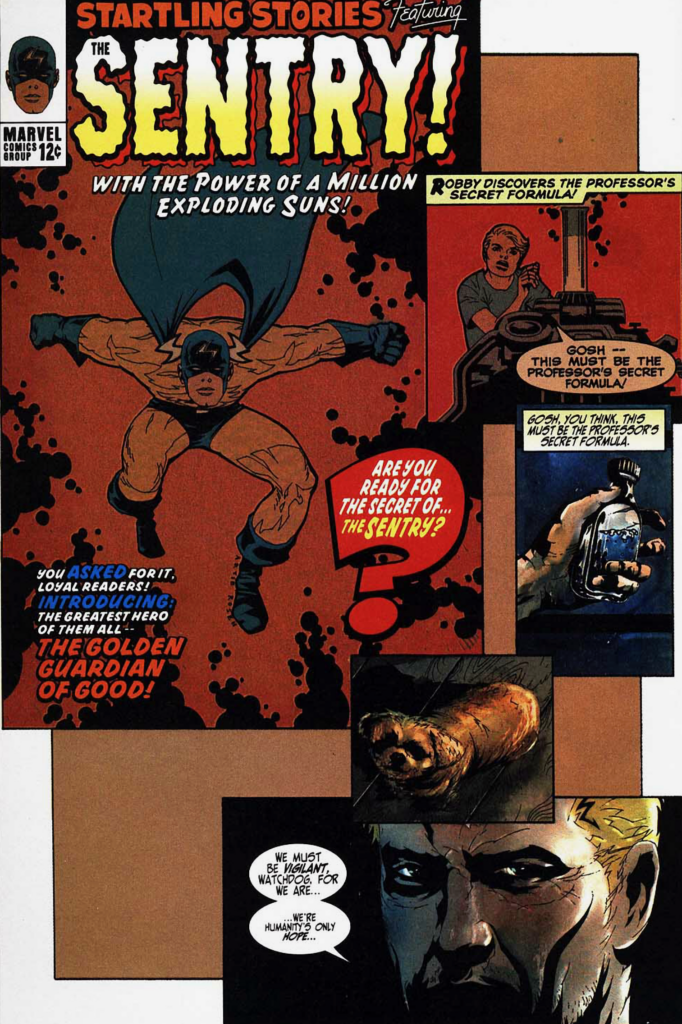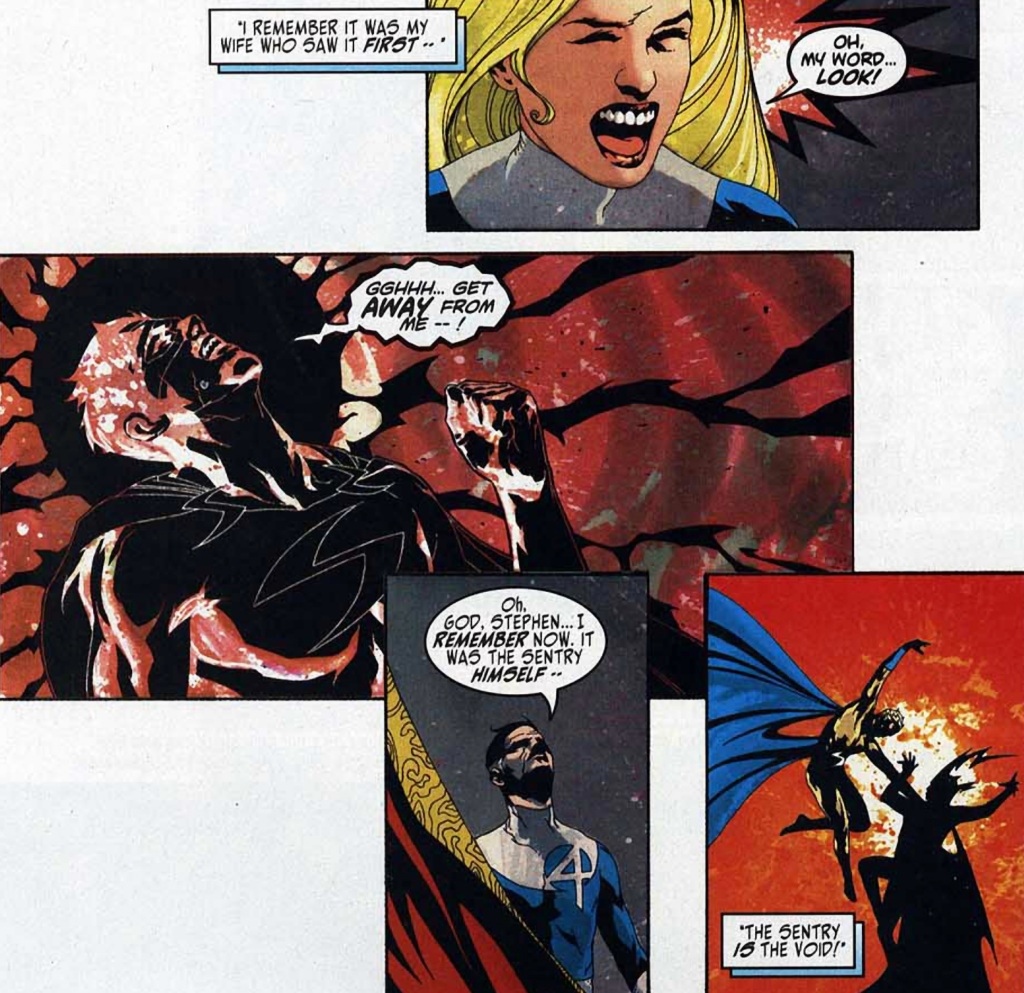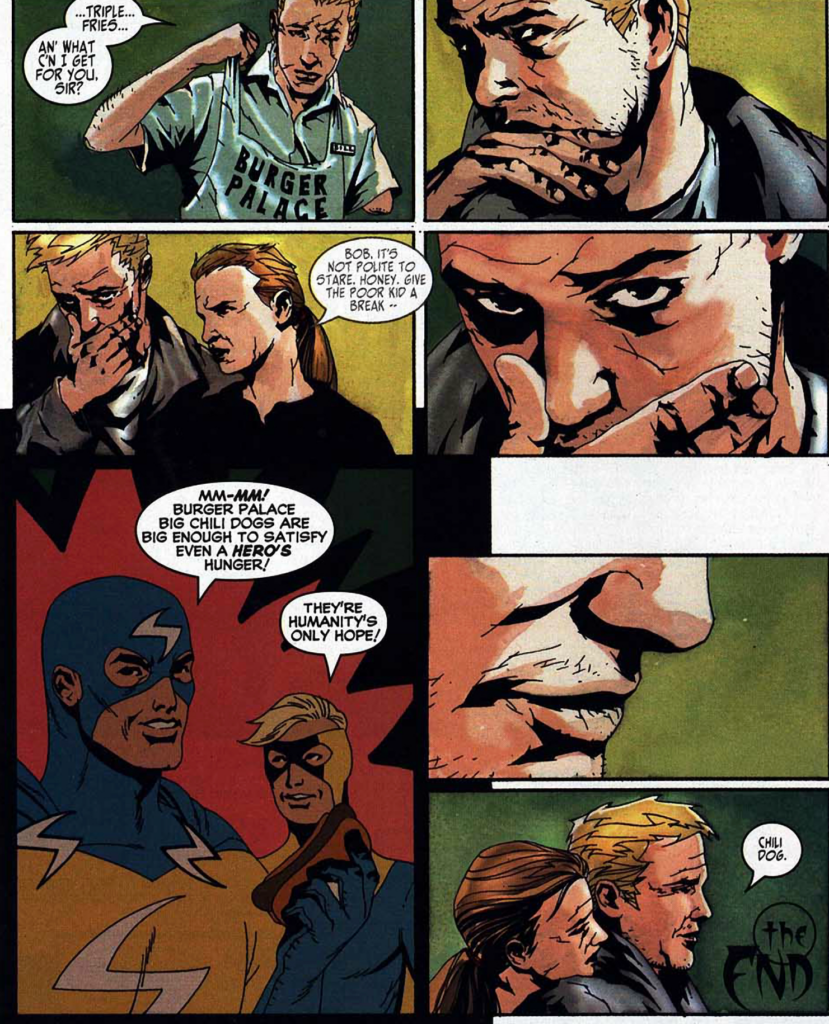
A middle-aged hero!
Under the Marvel Knights banner, The Sentry told a very different kind of superhero tale. It’s dark, and it’s genius.

Bob Reynolds’ dog wakes him and his wife up in the middle of the night. He staggers downstairs and starts remembering that he used to be a superhero called The Sentry—but his wife dismisses that as lies. He also appears to be an addict, and pulls out a nondescript bottle that he thinks, to himself, is his super serum. But to the reader, it could just as well be booze and this could all be fantasy. Until the last page of issue #1, when he suddenly floats up in the air.
The story is told with brilliant interweavings of pages from 1940s style comics…

…which get darker and more realistic as the series progresses.
Sentry’s purpose appears to be to protect the world from “The Void,” but we’re also told that Bob himself might be The Void.

Hence he doubts his own “hero-ness.”
Over the course of the story, Sentry reintroduces himself to Earth’s heroes, none of whom remember him—even though he played an important role in their lives: Angel had a fear of heights, and Sentry helped Professor X fix it.

He let Peter Parker take his picture, which earned Parker a journalism Pulitzer. Reed Richards was actually at his wedding.

Things like that. The Hulk one was the coolest because … Bill Sienkiewicz.

In fact, the mini-series was immediately followed by a string of one-shots showing some of Sentry’s forgotten adventures with Marvel’s heroes.

Sentry also had a sidekick, Scout, who lost an arm in a battle against The Void.
As the story progresses, the menace of The Void looms larger and the heroes begin to remember Sentry. It all finally culminated in the Sentry vs The Void one-shot, where we finally see that Sentry was in fact The Void.

Reed tells Stephen Strange to again erase everyone’s memories, including Reynolds himself, because the power of The Void cannot be contained. Although in the very end it is unclear whether the spell worked on Reynolds, as he and his wife are buying food and the heroic, 1950s version of Sentry pops into Bob’s consciousness…

Everything, from the early misdirects about alcoholic delusion to Void being Sentry’s arch-enemy, is surprising and original here. The series also provides fascinating insights into alcoholism, denial, and the power of memory and “choosing ones facts.”
Apparently, Rick Veitch was a key player in the creation of this character and thought up many of the narrative devices used in the story—it wasn’t all Paul Jenkins. So, I’ve credited Veitch below. Jae Lee drew the main series, with the other listed artists working on the one-shots.
